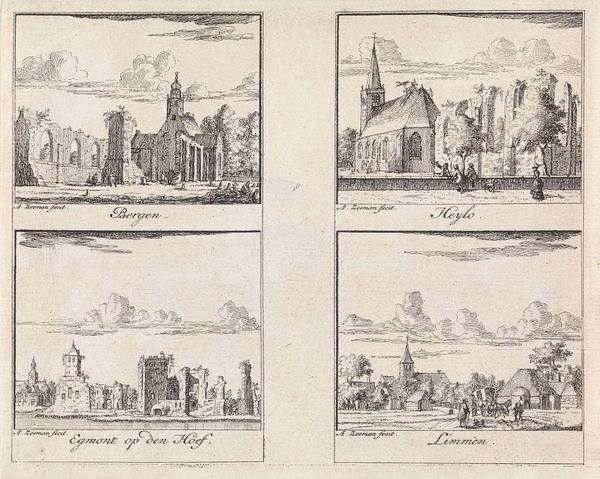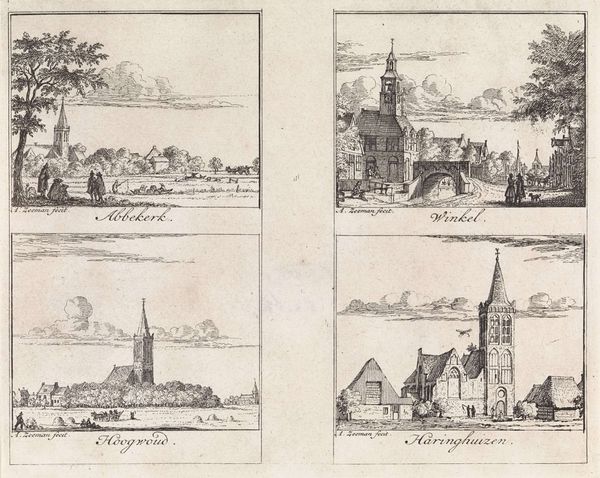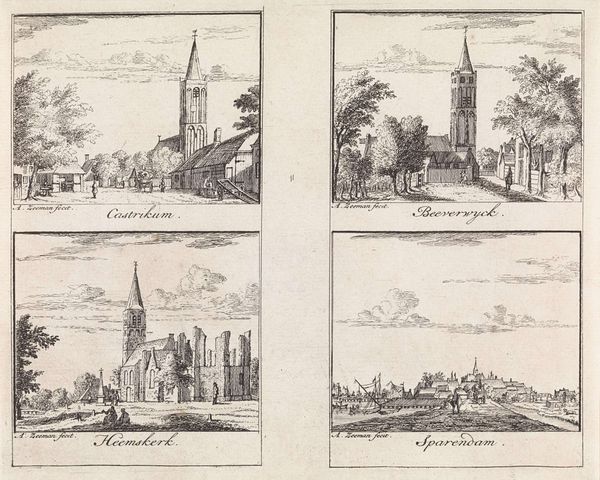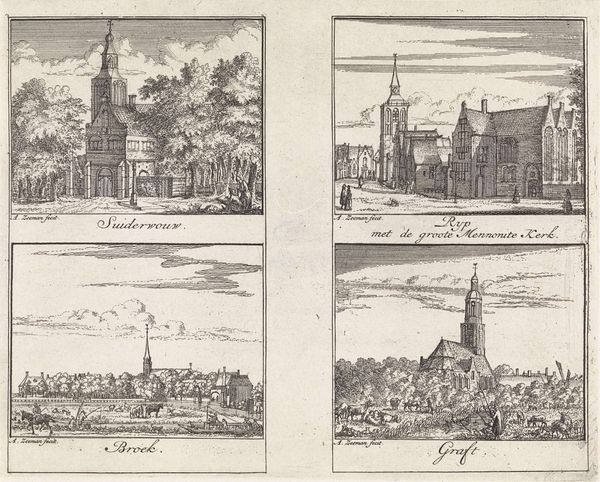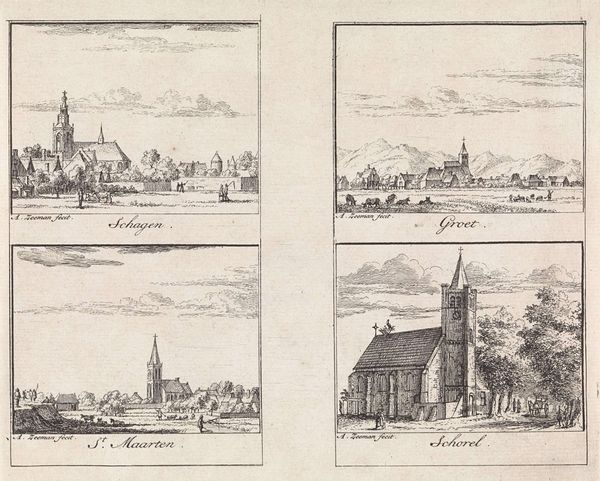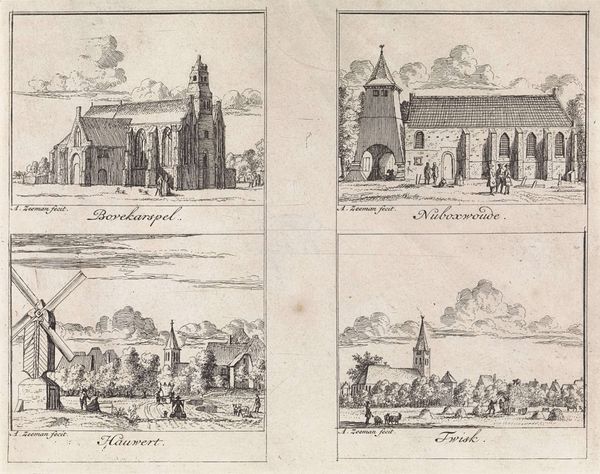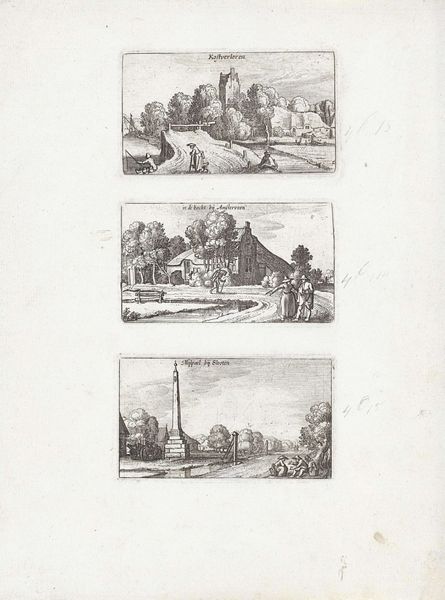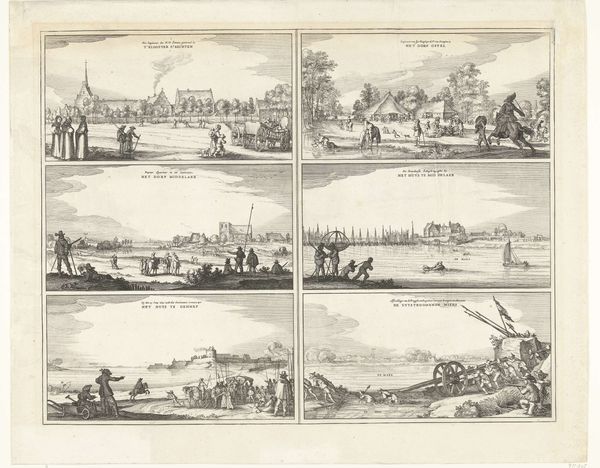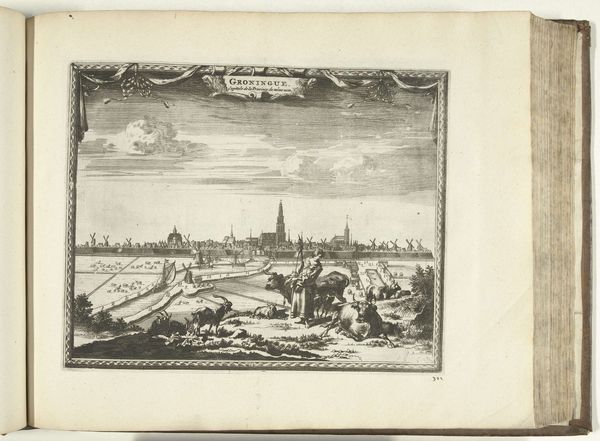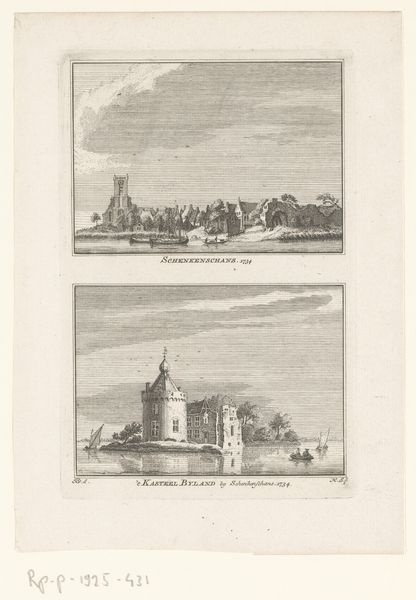
print, engraving
#
baroque
#
dutch-golden-age
# print
#
pen sketch
#
landscape
#
cityscape
#
engraving
Dimensions: height 145 mm, width 182 mm
Copyright: Rijks Museum: Open Domain
Editor: So, this is Abraham Zeeman's "Gezichten op Ransdorp, Landsmeer, Zunderdorp en Ilpendam," an engraving from 1732. It shows four little landscape vignettes. They feel… almost idyllic. I'm curious, what stories do you think these images tell about Dutch society at the time? Curator: Idyllic, perhaps on the surface. But let’s dig a bit deeper. This was the Dutch Golden Age, a period of immense wealth built, in part, on global trade and colonialism. Do you see how each vignette centres a church? What does that signify in terms of power structures and social control? How might these serene scenes obscure the realities of class division and global exploitation of resources and people? Editor: I hadn’t thought of it that way. I was focused on the calmness of the landscapes. The church dominating each scene makes sense given its importance in society. It's hard to see hints of exploitation here, but I can see how those factors underpinned Dutch society at the time. Curator: Exactly. Consider who is *not* represented. Where are the depictions of those whose labor fueled this prosperity? Or those who faced religious persecution? These prints participate in constructing a particular narrative – a controlled, prosperous, and undeniably Protestant Dutch landscape. We should be questioning whose stories get told and, perhaps more importantly, whose get left out? What do you make of the placement of each landscape within a rigid rectangle? Editor: It emphasizes the controlled nature, I suppose, almost as if these towns were specimens being catalogued. Is there a kind of statement about humanity's dominion over the land and maybe over others too? Curator: Precisely. These "views" offer not just depictions of places but also subtly reinforce a specific worldview. Keeping that in mind, do you see these landscapes differently now? Editor: I do. I'm more aware of the potential biases embedded within them and the larger historical context that shaped their creation. Thanks for bringing that perspective! Curator: It's all about looking beyond the surface, and understanding that art always exists within a complex web of power, identity, and history.
Comments
No comments
Be the first to comment and join the conversation on the ultimate creative platform.
